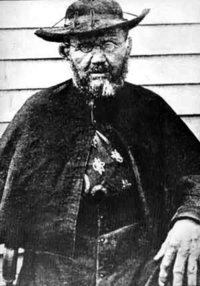TOKYO, Jan. 27 Kyodo
More than 100 preserved specimens of fetuses and newborn babies of leprosy patients were found at five state-run sanitariums and a research center in Japan, including 29 that were likely killed after birth, according to a government council report released Thursday.
The third-party council, set up by the Ministry of Health, Labor and Welfare to investigate the government's quarantine policy on leprosy that lasted until 1996 found that illegal abortions and autopsies were rampant at the facilities.
''This kind of behavior existed in national sanitariums across the country. It is far from adhering to medical ethics and has continued to damage the dignity of those placed in the facilities more than any other issue,'' the council report said.
In addition, the council also found that the facilities had more than 2,000 specimens from autopsies of leprosy patients after they died.
The council advises that a memorial service be held in due respect for the specimens.
The council plans to urge the ministry to take appropriate measures as soon as possible, including filing reports to the police and other authorities.
Until the Leprosy Prevention Law was repealed in 1996, Japan segregated leprosy patients in isolated sanitariums for decades, even after it was learned that leprosy, now known in medical terms as Hansen's disease, is not highly contagious.
The sanitariums had maintained the basic policy of isolating the patients and waiting for them to die out, and therefore did not permit them to give birth in most cases. As a result, forced abortions and sterilizations were common, the council said.
According to the survey, 80 percent of the 114 specimens of fetuses and newborns had not been operated on. The council believes that they were not kept for research, but simply because the facilities did not know what to do with them.
Among the specimens, 57 were found to have been produced between 1924 and 1956. Of these, more than 60 percent were collected prior to 1948 when abortion was allowed under the Eugenic Protection Law. Abortions performed after 1948 were still illegal as the patient's consent was not obtained.
Twenty-nine of all the specimens found were estimated to have been babies born after eight months of pregnancy.
Based on witness accounts by former patients, the council said it believes staff members may have choked the babies to death soon after birth, which would constitute murder under the Penal Code.
A landmark court ruling in May 2001 found the parliament and the government responsible for the suffering of leprosy patients by failing to repeal the leprosy prevention law until 1996 and ordered the state to pay compensation for forcing the patients into isolation.
Prime Minister Junichiro Koizumi, who took office only a month before the ruling, made a surprise move in deciding the government would not appeal. The Diet later passed a resolution of apology to the patients and a law to provide compensation.
Still, former leprosy patients continue to face discrimination in Japanese society, including a case in September 2003 where a hotel in Kumamoto Prefecture refused to accept former patients as guests.
COPYRIGHT 2005 Kyodo News International, Inc.
COPYRIGHT 2005 Gale Group



